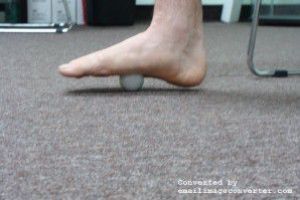
Healthy toes are straight, spaced, and free of the many problems that plague so many people in shod, or shoe wearing, populations. Most conventional footwear, including running shoes, possesses tapering toe boxes that force your toes into a wedge-like position. This design characteristic, along with heel elevation and toe spring, causes many foot and toe deformities over time.
![Making the Transition [Part 6 in The Case for Minimalist Footwear] Making the Transition [Part 6 in The Case for Minimalist Footwear]](/media/cache/cb/72/cb729789205d8736da73a675bb24693d.jpg)
So, maybe you are at the point now where you think that you would like to give this minimalist footwear theory a try. Where to next? Well, the good news is that it's easy to get started, you can do it now, and doesn't have to cost you anything. You really have nothing to lose!

Every single week I have several new clients come in to see me because they are in a great deal of pain. A handful have been dealing with it for a matter of a few weeks and have tried a couple different home remedies with unsatisfying results. But by far most of my clientele have suffered for multiple months or many years. They’ve gone to doctors and physical therapists, they’ve undergone surgeries, all with very little or even zero results. Pain has taken over much of their lives.
![Selecting Minimalist Footwear [Part 5 in the Case for Minimalist Footwear] Selecting Minimalist Footwear [Part 5 in the Case for Minimalist Footwear]](/media/cache/be/ef/beefeba685ac1a6d835ee302e7c59ae9.jpg)
While the first 4 parts of this series have set barefoot as the ideal, it is unrealistic to assume that barefoot is always practical. There are many situations where some form of footwear is required, whether it be for climate (winter), safety (building construction), hygiene (hospital), function (downhill skiing), or fashion (dress code).
![What Does the Research Show? [Part 4 in The Case For Minimalist Footwear] What Does the Research Show? [Part 4 in The Case For Minimalist Footwear]](/media/cache/4e/e4/4ee406db25527a9e642fd684a3c10df7.jpg)
All of this talk about barefoot being better than shod probably has you wondering what research has to say about this. After all, all of those high-tech shoe companies must have some science to back-up their designs right? Here are links talking about research that has been done that might get you thinking otherwise.

![Making the Transition [Part 6 in The Case for Minimalist Footwear] Making the Transition [Part 6 in The Case for Minimalist Footwear]](/media/cache/cb/72/cb729789205d8736da73a675bb24693d.jpg)

![Selecting Minimalist Footwear [Part 5 in the Case for Minimalist Footwear] Selecting Minimalist Footwear [Part 5 in the Case for Minimalist Footwear]](/media/cache/be/ef/beefeba685ac1a6d835ee302e7c59ae9.jpg)
![What Does the Research Show? [Part 4 in The Case For Minimalist Footwear] What Does the Research Show? [Part 4 in The Case For Minimalist Footwear]](/media/cache/4e/e4/4ee406db25527a9e642fd684a3c10df7.jpg)